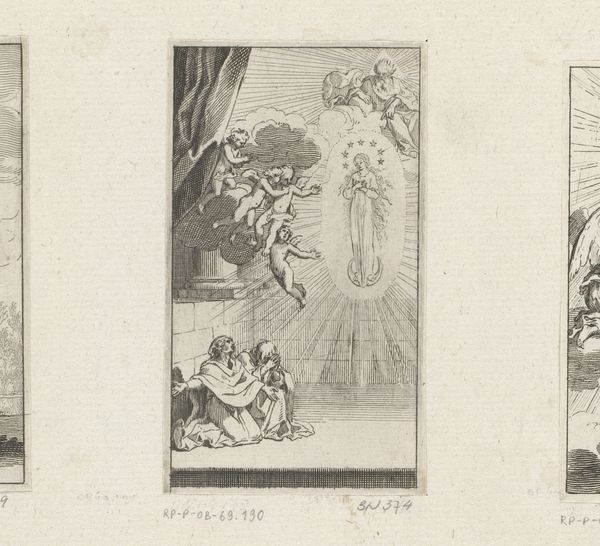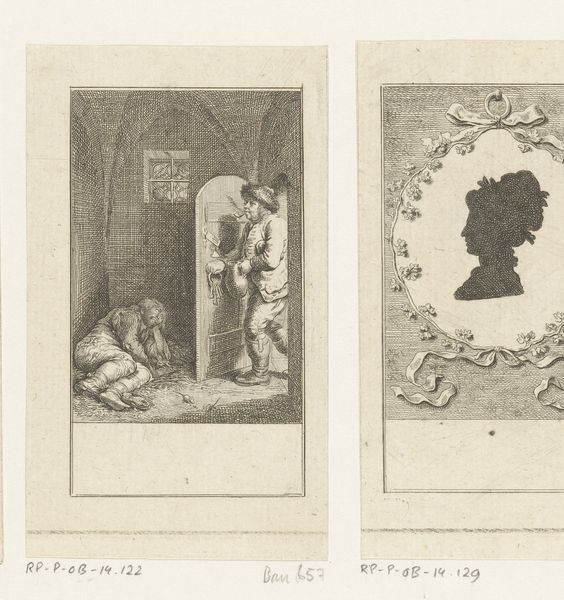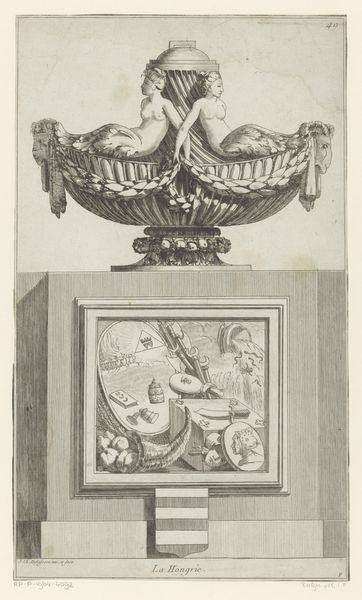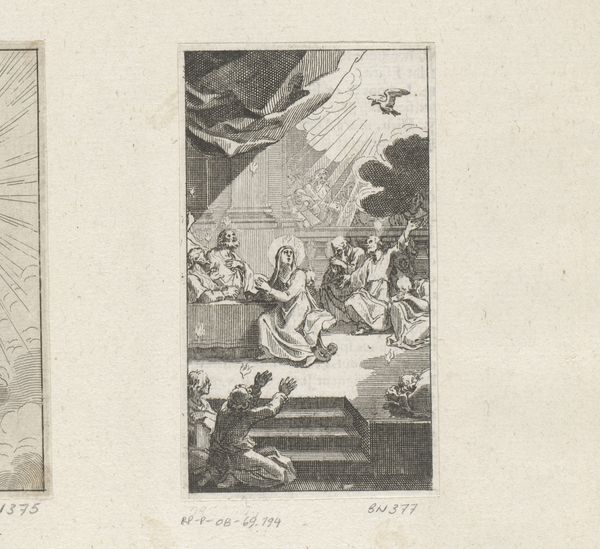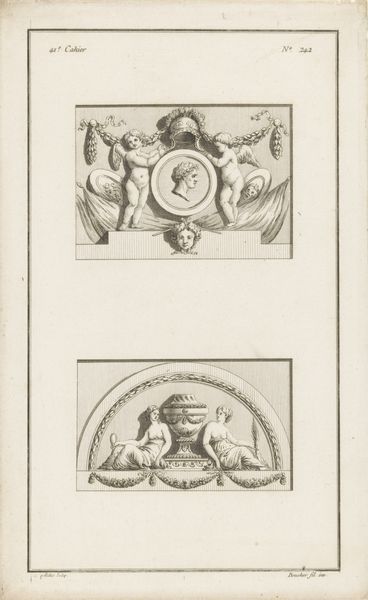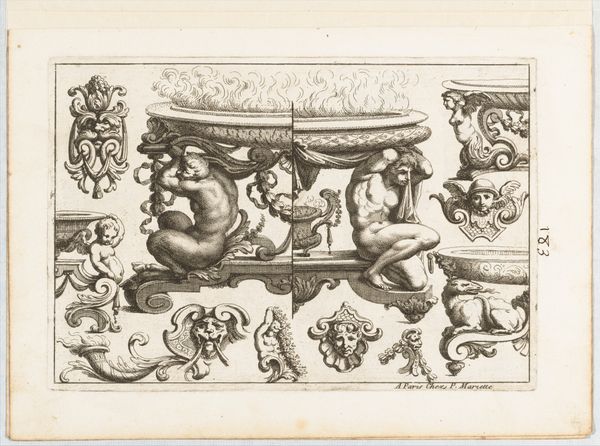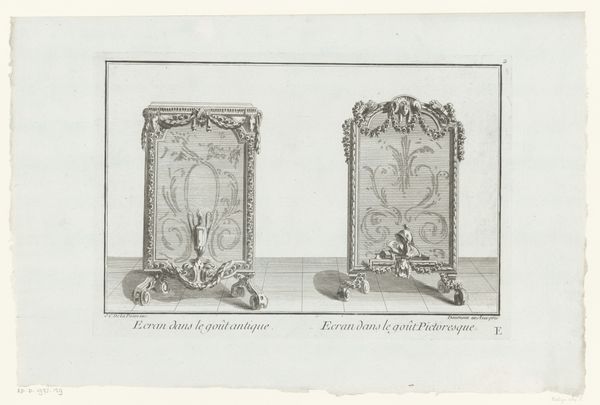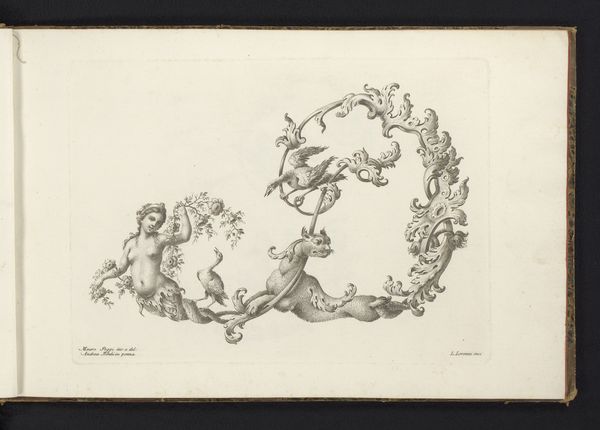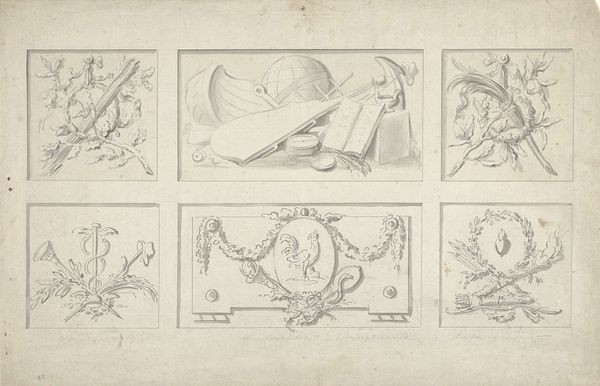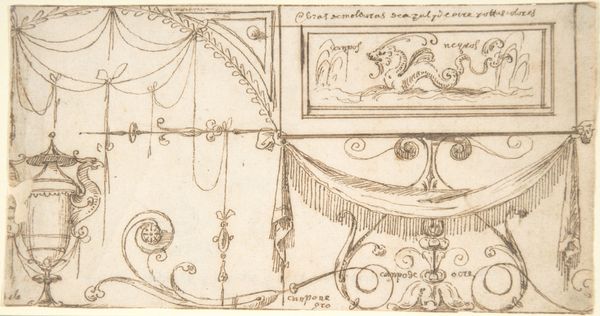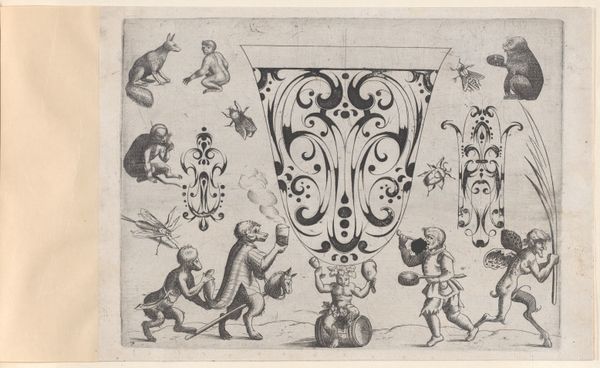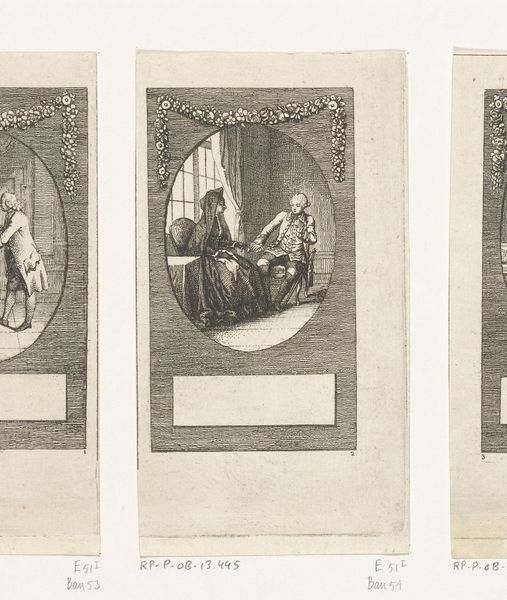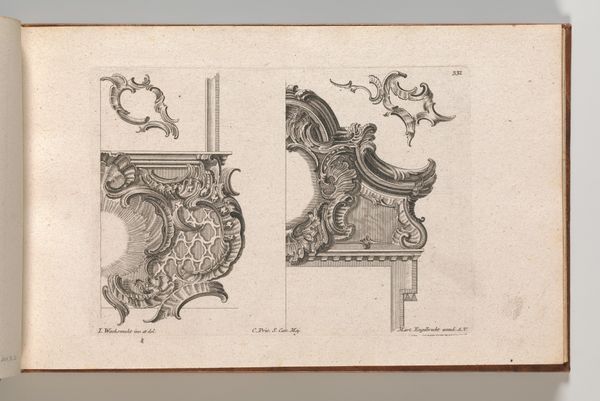
drawing, print, etching
#
drawing
#
baroque
# print
#
etching
#
figuration
#
form
#
geometric
#
line
#
academic-art
Dimensions: height 90 mm, width 61 mm
Copyright: Rijks Museum: Open Domain
Curator: Here we have Sébastien Leclerc I’s "Eindige en oneindige lijnen," or "Finite and Infinite Lines," an etching dating back to 1669, currently held at the Rijksmuseum. Editor: It strikes me as an ode to precision, yet rendered with such playful lightness. Look at the cherubic figure, seemingly dictating the curvature of space itself! There is a tension in the rendering technique itself – a print replicating spontaneous creation. Curator: Absolutely. Leclerc was working within the academic artistic structures of his time. As an engraver to the Académie Royale, disseminating knowledge and promoting artistic standards was key. Editor: Precisely. Notice how the lines themselves become almost tangible through the etching. We're reminded that even in capturing ethereal concepts, there's the deliberate application of pressure, of tools against the plate to transfer the idea. The material is not just a passive recipient; it is deeply entangled. Curator: It does make you wonder about the reception of these prints within the Académie and beyond. Who was using them and how? Were they primarily artists, students, or perhaps wealthy amateurs? The image becomes a site of negotiation – demonstrating an ideal and at the same time reinforcing an artistic hierarchy. Editor: The print itself would have been fairly reproducible, made from an etched metal plate after all. Considering that would mean that in turn, mathematical ideas were becoming material and, by the multiple of editioning, relatively democratic in dispersal and access, too. It suggests knowledge wasn't locked away in single precious works, and ideas themselves had distribution capacity beyond class divides. Curator: That's an insightful point. Seeing the geometry tools alongside the putto subtly reinforces that idea. Leclerc seems to invite viewers to understand the intersection of human intellect, craft and idealized beauty. Editor: Well, examining how an artwork comes into being inevitably shifts our perspective, doesn't it? It prevents a purely aesthetic or intellectual reading by highlighting what underpins both. Curator: It truly does. This piece is a small, subtle work but its layers are incredibly deep and worth taking time to ponder. Editor: Indeed, from concept to creation, an endless fascination.
Comments
No comments
Be the first to comment and join the conversation on the ultimate creative platform.
